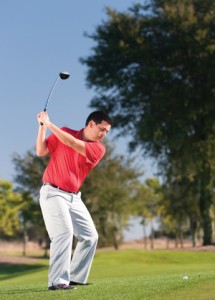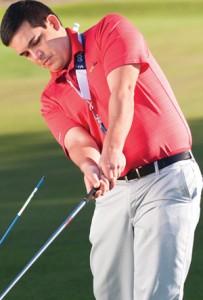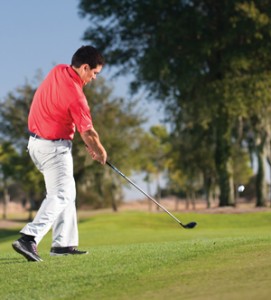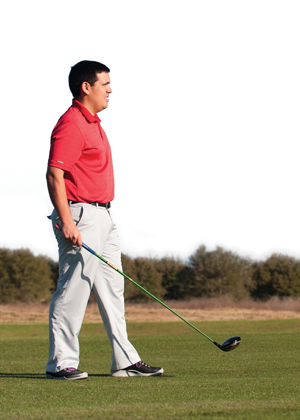 PGA Professional Nick Paez, the owner of six GolfTEC locations in Cleveland, Ohio, and one of Golf Digest’s Best Young Teachers in America, is the 2012 Northern Ohio PGA Teacher of the Year.
PGA Professional Nick Paez, the owner of six GolfTEC locations in Cleveland, Ohio, and one of Golf Digest’s Best Young Teachers in America, is the 2012 Northern Ohio PGA Teacher of the Year.
In 2001, I accepted my first position as a teaching professional at a private club. I had some success with players, and my lesson book filled up quickly. But I would also ask my members who didn’t take lessons why they stayed away from golf instruction. The typical response was, “I would take lessons, but I don’t want to get worse before I get better.” That really struck a chord with me, and I wanted to make sure that wasn’t happening to my students.
That’s when I decided to develop a program that would help players improve their technique and – at the very least – play no worse than at their regular level before our changes took effect and started leading to lower scores and handicaps. I came up with a way for my students to practice that would help them avoid on-course issues during the learning process. The practice plan I teach them includes ways to work on technique, on-course shotmaking and handling their emotions. If you follow this plan, your students should ideally be going in the right direction with few plateaus in the process, which means happier students and better retention numbers.

Practicing technique
In terms of golf swing technique, I’m a believer in this idea: “You train, then you trust.” I want my students to work on technique in practice so they get to a point where they’re not thinking about technique on the course. Practice is the time to think about the swing, so when you’re playing you can think about the game. So I teach them how to practice using feedback from training aids, drills and video to train their mind and body to ingrain the technique I’m teaching them. Slow reps with training aids that I show them how to use are a great help in making practice time efficient and effective.

Practicing shotmaking
When practicing, many students have the tendency to aim straight downrange and swing away. On the course, however, they find themselves in situations that call for different types of shots. I teach my students to work on a variety of shots when they practice. The mix of shots to practice depends on the skill level of the player: Better players should work on hitting draws (pictured) and fades around obstacles, and low and high shots; beginners should work on high and low pitch shots from 15, 25 and 35 yards. By practicing these shots, they’ll be ready to execute them more confidently on the course, which will lead to more consistent scoring.

Keeping in the “Spirit of Golf”
Four years ago, I was driving with a friend to play in the Toledo Open. His game was really improving, and he introduced me to the program he was following. It was a peak performance program called the Spirit of Golf, and it was created by Tim Kremer. Hearing the ideas were like turning on a light bulb to me, and I contacted Tim when I got home. I’ve since become a certified Spirit of Golf coach, which helps me communicate information to my students about how to handle situations on the course. Don’t get me wrong, you need good technique to play this game well. But managing your emotions and your practice habits lead to better results on the course and more enjoyment during the improvement process – and that can only help your students and your teaching business.
Developing an emotional pre-shot routine
Controlling our emotions on the course is extremely important. Teaching your students to manage their emotions with a pre-shot routine is one way of ensuring more even performances from round to round, even while they’re incorporating swing changes. With each student, I help them find the feeling they prefer to have when they get ready to hit a shot – that might be confident, enthused, eager, calm, relaxed, or ready to have fun. You can even have them practice shots with different emotions to see which one produces the best result. When you find the emotion that works best, help them build a pre-shot routine that gets them into the right frame of mind. Teach them to be deliberate, and to use their breathing to acquire the right emotion – and when they have it, step up and execute the shot.



